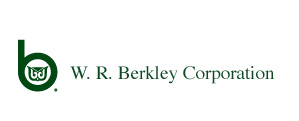The insurance and reinsurance holding company has reported net income of $162 million for the third-quarter of 2018 and $508 million for the first-nine months of the year, compared with $162 million and $395 million in the previous year, respectively.
Overall, gross premiums written (GPW) increased to $1.9 billion in Q3 and $5.9 billion in 9M 2018, with net premiums written (NPW) increasing to $1.6 billion and $4.9 billion, respectively, and when compared with the previous year.
The company’s results show that the increase in overall NPW was driven by a 5% expansion in the insurance area, while the reinsurance segment’s NPW actually declined in Q3 by 14%, to $119 million.
For the first nine months of the year, the firm’s reinsurance segment pulled back by roughly 16% to $352 million, underlining the company’s willingness to either reduce or cease writing business in lines that fail to offer adequate returns.
During the company’s Q3 2018 earnings call, CFO Baio commented on the continued discipline within its reinsurance underwriting unit.
“The team has maintained its underwriting discipline and shrunk the business when unable to write business that can achieve its targeted risk-adjusted rate-of-return. Our reinsurance segment declined by 14% to $119 million, primarily driven by the soft area of the market,” said Baio.
The firm’s CFO continued to stress that while there are pockets of opportunity in the global reinsurance market, the North American property casualty environment remains more competitive than other areas.
In light of the muted rate responses through 2018 to 2017 cat events, exacerbated by the reloading and impressive, and expansive response of the alternative capital markets, this isn’t at all surprising.
Furthermore, the rise and influence of the insurance-linked securities (ILS) market on the global insurance and reinsurance sector shows no signs of slowing, and so the competitive landscape is expected to persist through 2018 and into next year, absent a truly unprecedented level of cat losses in the fourth-quarter.
The re/insurer’s Chairman and Chief Executive Officer (CEO), Robert Berkley, commented more broadly on the reinsurance market landscape, noting that from Berkley’s perspective, “reinsurance continues to be what I would define as a relatively grim picture.”
It will be interesting to see if Berkley continues to pull-back on reinsurance business in the final quarter of the year. With an expectation of continued pressure on rates, driven by intense competition and an abundant supply of capital from both traditional and alternative sources, areas of the global reinsurance segment, such as the U.S. property casualty arena, are likely to experience further rate pressure in 2018 and beyond, suggesting companies such as Berkley might pull-back further from the segment in the future.













